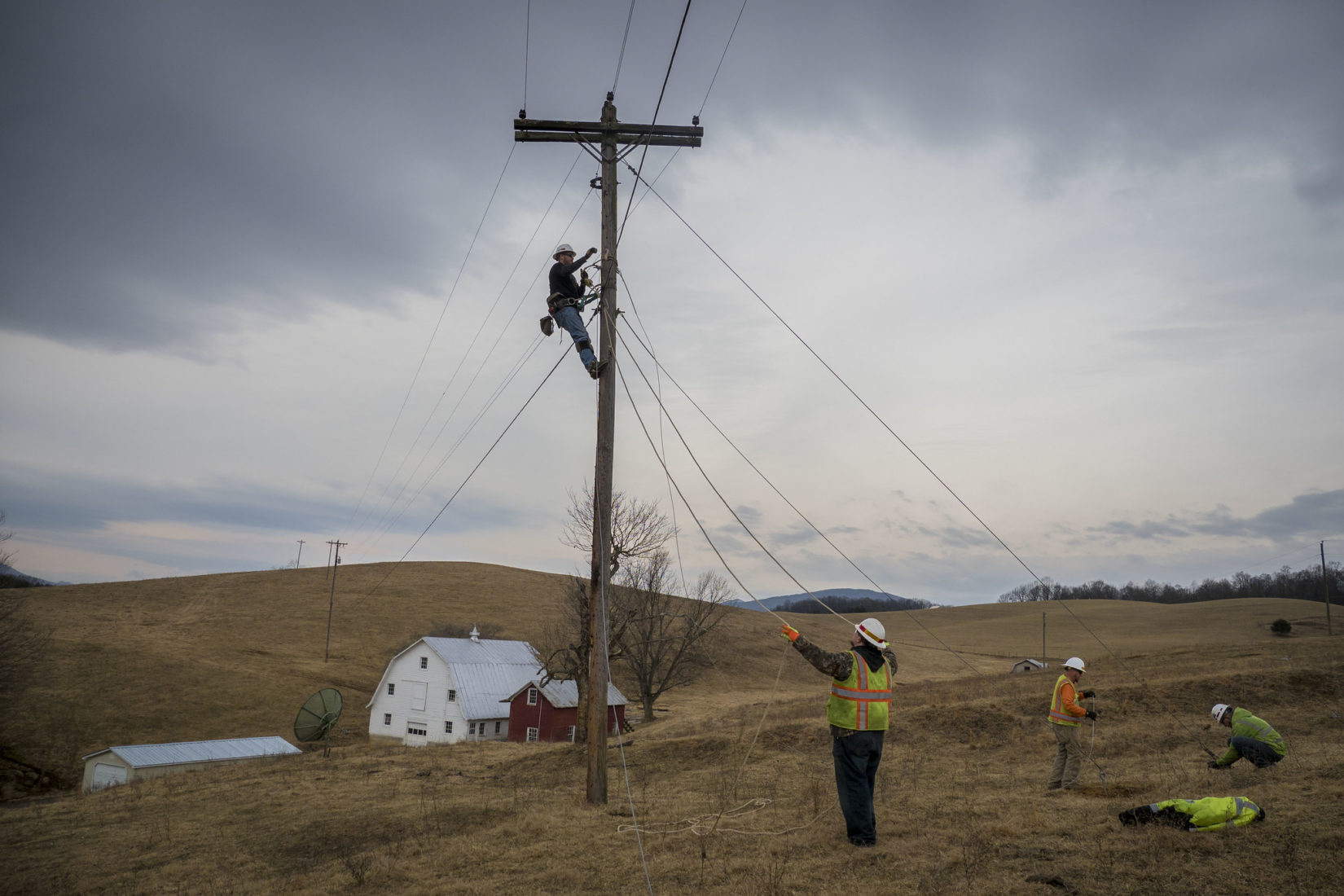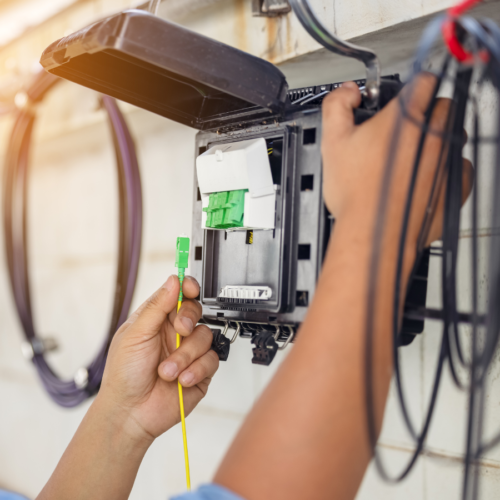The status and statistics of rural broadband
High speed broadband has been lacking in the rural areas of our country — compared to urban and suburban areas — for many years. People living in rural America do not have to be told they need broadband — they are well aware of the disadvantages they face living with lack of high speed internet. Children suffer because they lack of access to high speed internet for homework or research projects compared to students in metropolitan areas. Rural business owners are at a significant economic disadvantage without high speed access to the internet for online ordering, credit card processing, online banking, and business marketing. Doctors and lawyers in rural areas need high-speed internet access, too.
Betsy Huber, president and master of the National Grange, who was recently appointed to the Federal Communications Commission’s (FCC) Broadband Advisory Committee, stated that the Grange has been a longtime advocate for rural broadband and that she now has the awesome responsibility to be a voice for rural America and its people, businesses, and farmers. Huber will advocate for the need for internet services not only in the home and the barn, but also on the tractor in the field.
Let’s look at some rural versus urban statistics. In rural America only 55 percent of residents and businesses have access to broadband with speeds of 25 MBPS or greater, while in the cities, 94 percent availability is the norm. The percentage rises to 64 percent in rural areas with slower 10 MBPS availability; however, the FCC does not classify speeds that slow as “high speed internet.”
Competition improves choice. Only 19 percent of rural areas have a choice of broadband providers, while 60 percent of the rest of the country has choice. Put another way, 36 percent of rural Americans lack any access to broadband, even at slower speeds, but in the urban and suburban areas, only 4 percent lack access. In terms of numbers, 23 million people in rural areas have no access to high speed internet service; that is a bigger problem. Interestingly, where there is access to broadband, 100 million residents still do not subscribe, even though it is available to them. For some the reason is cost, others do not see the need for the service, and many older citizens do not even own a computer.
So why is broadband coverage so low in rural America? With very few exceptions, broadband service is provided by the private sector. For providers such as Comcast or Fair Point, the question of where to provide high speed internet access is purely a business decision. The return on investment of stringing fiber optic cable for limited connectivity in remote areas can be a poor business choice. It costs roughly the same amount to string a cable in the city and potentially attach one thousand subscribers as it does to string cable in rural locations and potentially attract six subscribers. On average, it costs $40,000 per mile to string cable.
It should be noted that today’s farmers rely more and more on access to high speed broadband. They need to be competitive and efficient and have access to data needed to operate their businesses. In some agricultural areas, farmers are starting collectives to string their own lines from the provider’s connection point. It is not uncommon for people on the outskirts of rural communities with no access to broadband to go to the local library to login to the internet just to read their email.

Virginia's BARC Electric Cooperative leads the way in the Lexington, Va. area installing fiber optic cables to the existing electrical grid, which will bring dependable high-speed broadband to the area for the first time. Rural areas where business and residential consumers use broadband service are more likely to enjoy higher incomes, lower unemployment rates and stronger growth than those without broadband. Because broadband offers rural areas connectivity to business, education, health care and other services necessary for economic growth, it is rapidly becoming indispensable in all sectors of the economy. Rural electric co-operatives across the country are increasingly involved in rural broadband deployment. There is growing concern about the lingering urban-rural broadband divide and who will work to deliver broadband to rural communities. USDA Photo by Preston Keres.
What is the solution? In its latest budget the FCC is providing $2 billion over 10 years for subsidies to encourage providers to string lines in rural areas and make connections. There are also currently several bills before Congress dealing with broadband accessibility, as outlined by Jessica Mulholland and Eyragon Eidam in the August 6 edition of Government Technology. The bipartisan Advancing Innovation and Reinvigorating Widespread Access to Viable Electromagnetic Spectrum (AIRWAVES) bill, was introduced by Senator Cory Gardner, R-Colorado, and Senator Maggie Hassan, D-New Hampshire. The legislation aims to drive down wireless costs by opening commercially licensed and unlicensed spectrum space, while hopefully bettering broadband access in rural areas.
In a similar spirit, the U.S. House of Representatives’ Rural Reasonable and Comparable Wireless Access Act of 2017 would direct the FCC to develop a national standard for “reasonably comparable” broadband services in rural and urban areas. Since the bill’s introduction in mid-June, however, it has not progressed in the House.
Also in mid-June, Representative Doug Collins of Georgia introduced legislation that would provide tax incentives for companies willing to build out rural broadband services. The so-called Gigabit Opportunity Act would effectively allow companies to front load the expensing of investments in rural networks within applicable zones. FCC Chairman Ajit Pai lauded the bill, which has not progressed since its June 16 introduction.
And in March, Senators Orrin Hatch (Utah), Steve Daines (Montana), and Deb Fischer (Nebraska) introduced legislation that would streamline broadband permitting in existing highway rights-of-way for broadband infrastructure projects. Called the Highway Rights-of-Way Permitting Efficiency Act of 2017, the bill seeks to avoid duplicative federal permitting and regulations and other issues that cause project delays and cost-overruns.
States in the CSG/ERC region are taking measures to expand broadband in their states as well.
On June 14, the Maine House passed Legislative Document 1399, which would create the nonprofit Maine Broadband Initiative. The goal of the organization would be to spur high-speed broadband in unserved and underserved parts of the state. The broadband initiative would replace the ConnectME Authority with the new Maine Broadband Initiative. On June 15, the Maine Senate placed the bill on the Special Appropriations Table, which is tasked with determining how to fund the bill.
In late May, Maryland Governor Larry Hogan signed the bipartisan Senate Bill 717, which establishes the Task Force on Rural Internet, Broadband, Wireless and Cellular Service as a means of studying and outlining recommendations to further the technology in underserved rural areas.
The goal of New Hampshire House Bill 238 is to establish a committee to study broadband access, one of the first steps in working toward bringing access to rural residents. The bill was introduced in New Hampshire in December 2016, but it did not pass the House until February 2017, and then passed the Senate on April 27. New Hampshire currently has SB 170 that would set up a public-private partnership to leverage investment. That bill has passed the appropriate Senate committee and will go to the full Senate in January. It is expected to pass the Senate, but will have more resistance in the House.
New York’s Assembly Bill 4869 aims to create a tax credit for providers willing to deploy broadband services to rural or underserved homes and businesses. The bill, aptly named the Credit for Rural Broadband Act of 2017, was both introduced and referred to the Senate Governmental Operations Committee on February 3, and has not showed any signs of moving forward.
Legislatures at both federal and state levels will need to be willing to subsidize rural broad banding in order for providers to move forward with build out.
The CSG/ERC Rural and Agricultural Affairs Committee staff will continue to monitor the rural broadband situation at the state level and give you updates as they occur.





